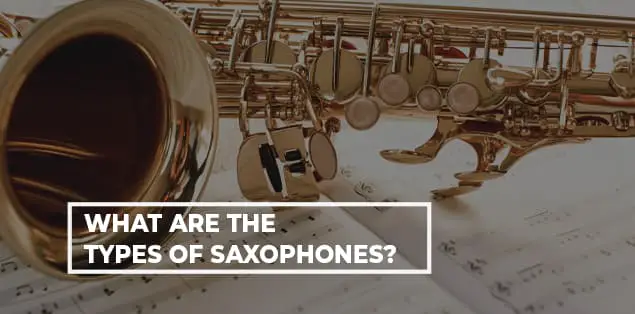So, what are the types of Saxophones? Many people only think of the four well-known types of saxophones when they hear the word. There are numerous different types of saxophones, first invented in 1846 by a Belgian named Adolphe Sax.
Soprano, baritone, tenor, and alto saxophones are some of the most well-known saxophones, but the list doesn’t stop here.
The saxophone is a relatively recent instrument compared to the history of musical instruments. Adolphe Sax imagined it around 1840 and perfected it around 1846. Humans invented instruments in large numbers during the twentieth century. However, most of them were new electric instruments or electric adaptations of existing instruments.
The saxophone is a relatively new non-electric instrument that comes in various styles.
If asked which saxophonists saxophone they play, they will almost certainly say they play several. This isn’t exclusive to saxophonists. Guitarists, bassists, keyboardists, and other musicians accumulate gear and various instruments to achieve varied sounds for different playing settings.
Clarinetists, trumpet players, and flute players, for example, all require different instruments depending on the gig.
The goal behind the sax’s invention was to combine the force of brass instruments with the agility and quickness of woodwind instruments. He originally designed seven distinct saxophone sizes, ranging from the high sopranino to the massive contrabass.
The most famous ones are the four most common saxophones- they are popular because of their wide use in modern contemporary music. When he created the Sax, Sax was a flute and clarinetist. As a result, people named the saxophone after him, and we can identify his instrument as a brass wind instrument. In many musical ensembles, the saxophone is a popular instrument.
It never became a conventional member of the orchestra. However, it is heard frequently in works by Shostakovich, Debussy, and Glazunov. Marcel Mule and his instruction exemplified a recognized school of classical saxophone playing at the Paris Conservatoire.
General Trivia
Talking about the anatomy of Sax, the manufacturers generally make it of the main body, mouthpiece (called reed), and the part that connects the main body and reed (neck). The ligature is a metal (or sometimes leather) cylinder that connects the reed to the mouthpiece.
The reed vibrates when the person breathes in and then blows through the mouthpiece, creating a sound wave. The mouthpiece is connected to the body by the neck, essentially a metal tube with holes in it.
The main body area is like the shape that goes down from the neckpiece and upwards towards the main body’s end. They place a key over each hole in the body. With their fingers, the saxophonist may close different holes in her fingers as she blows, creating distinct tones.
This write-up aims to familiarize the readers with the various saxophones varieties for several reasons. First, to comprehend each saxophone’s distinctive applications, recognize the different types of saxophones by sight and sound, and determine which saxophone is suitable for those who want to learn it.
So types of saxophones would be described here for readers to understand better which one can suit them.
How Many Types of Saxophones Are There?
Soprano, baritone, tenor, contrabass saxophone, and alto saxophones are among the most well-known saxophones. If you’re curious if there are any more, here’s a comprehensive list:
Alto Saxophone
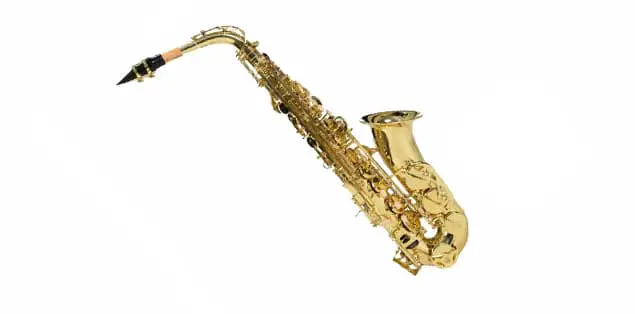
- One of the top-most choices for beginners is this one. It’s an Eb instrument. It is the most popular saxophone, especially among students. Usually, instrumentalists start on this saxophone before progressing to certain other equipment. It’s written in E flat.
- It’s tiny and easy to use, with a little tip. The youngest musicians have little trouble playing the alto saxophone.
- The fingering on the alto sax is comparable to that on all other saxophones, allowing alto players to progress to other saxophone types and improve their talents quickly. You can mostly find Alto saxophones in jazz bands.
- The alto saxophone, along with the tenor, is the most common. It is larger than the soprano, and while there are straight versions, most manufacturers build it with a curved bell at the bottom. It is versatile enough to play a wide range of musical styles, including classical, jazz, rock, etc.
- Humans created the alto saxophone to perform tunes. It produces a crisp, mid-level sound. People frequently include the alto saxophonist as a soloist.
C Melody Saxophone
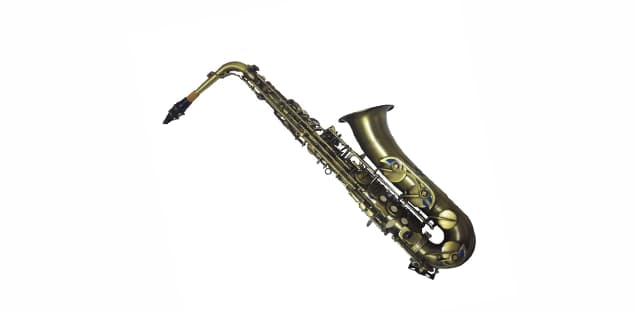
- The C melody saxophone belongs to a distinct saxophone family. It’s the only saxophone that plays at concert pitch, which means it sounds like a concert C when played a C. The C melody saxophone was popular in the 1920s and 1930s, but that has altered over time. However, you can occasionally hear the C melody saxophone in a trad jazz band.
- Without needing to transpose, the musician could glance over the shoulder of a pianist and play along. Its popularity dwindled fast. Although manufacturers are creating new C-Melody saxophones today, they are not feasible instruments to acquire. If anyone wants to acquire one for the novelty, they can get one from the 1920s for a reasonable price
- Because it is so similar in pitch to the tenor. We frequently overlook the C Melody saxophone when people enumerate the saxophone family members. That’s in the major of C, a full tone higher than its much more well-known twin.
- This implies that it is not a transposing instrument, unlike most other saxophones. The notes A-C feel precisely like a C when played on the C chord sax.
- The C motif was renowned as a ‘parlor’ component in New York in the early nineteenth century: performers could congregate around the organ and discuss musical notation for hit tracks without transposing.
- The instrument’s tone is also slightly muted, making it ideal for playing at home without bothering the neighbors.
Saxello Saxophone
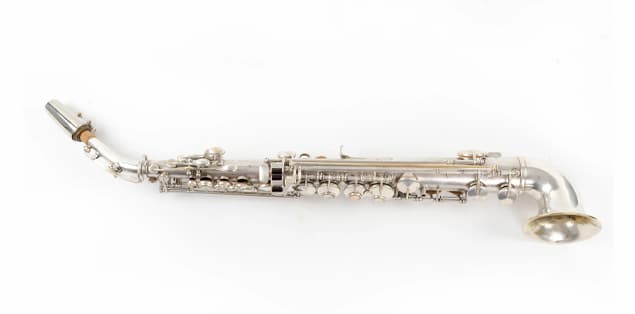
- Saxello looks terrific and is a boutique saxophone. It features a beautiful and adaptable tone structure. You can customize its sound palette to create a unique voice. The attractive black nickel-plated allows the musician to stand out with its excellent intonation.
- The manufacturers make Saxello of satin silver. However, You can also find it with others with artist engraving and gold plating.
- The keyword is quick, fluid, and comfortable to play. The key work design is appropriate for the person’s hands and fingers, with the right angles and forms. It has a slanted bell that can provide better player feedback. The player can also better sculpt and enunciate their melody by tilting the bell.
- It has a distinct shape as a Bb Soprano saxophone. The manufacturers first released it between 1924 and 1925. People usually see that the Saxello has a half-turned bell with a curved top. The Saxello provided more comfort, improved tone, ease of play, and a better flash.
Baritone Saxophone
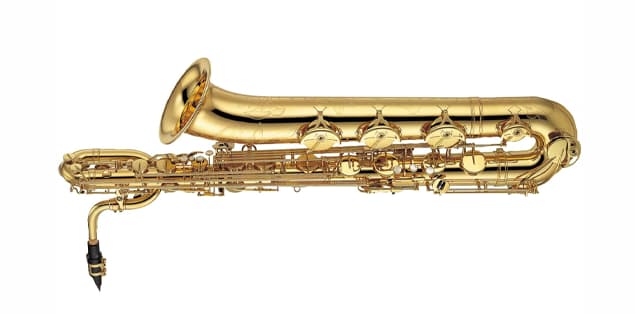
- The bari sax is a lower-toned Eb saxophone. Many people loathe blowing the sax because of its features. Its size, weight, and the vast amount of air required to make sound are examples of such characteristics.
- A beginner should use this saxophone, yet it’s also excellent for advanced players. The ranges I’ve written are only estimates. A low A is common on bari sax, while we only pitch others to a low Bb.
- Low As is present in some altos, but they are uncommon. Makers tune most altos, tenors, and sopranos to low Bb. With altissimo, the saxophone’s upper register is nearly unlimited.
- Because the tube’s length necessitates a more curved design than the others to be portable, the baritone features a significantly longer bell at the bottom and an elegantly coiled neck at the top.
- It’s less prevalent as a solo instrument than the alto or tenor. However, it’s frequently heard in groups and big bands, and makers famously feature it on tracks like this incredible rendition of Moanin’. Lisa Simpson plays the baritone sax, which is a sort of Sax.
- It is smaller than a bass saxophone. Among the regularly used saxophones, the bari sax has the lowest pitch. It is three feet tall and weighs between 12 and 35 pounds. It’s large, yet it’s manageable. You can find a low A on the bari sax.
- This very snappy low note is used in modern ensemble composing, especially in big bands, where a bari sax is usually at the bottom of a five-person saxophone section. Concert and military bands with classical quartets and funk, soul, and Motown horn sections use the instrument.
- Fela Kuti, an Afro-beat musician, frequently had two baritones in his ensemble.
Soprano Saxophone
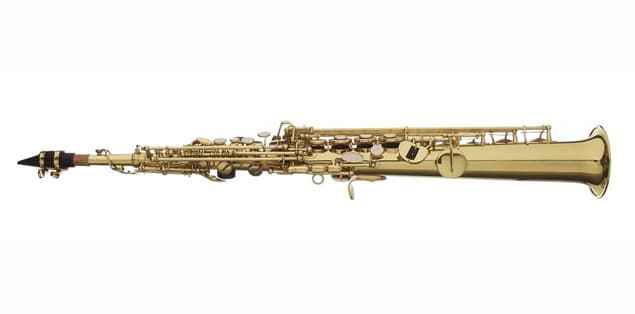
- This is the most common saxophone with the highest pitch. It’s a transposing keyboard. Since it’s a key of Bb, the ultimate tone is a symphonic tune Bb if performed on a C. The spectrum of the soprano is comparable to that of a Bb horn, extending between Ab3 and E6, based upon a composer’s ability.
- It is really the only sax with a narrower head due to its unusual design. There are still certain saxophone versions with flatter bores obtainable. Latin jazz performers mostly employed it after Kenny G popularised the tenor sax in the 1980s.
- The tenor sax is the tiniest among the four main saxes. It has the option of being straight or curved. We regard the soprano saxophone as the most difficult to master.
- Compared to other saxophone kinds, the soprano saxophone produces a higher-register sound. It has a square shape as the third smallest saxophone. As a result, the clarinets and recorders may appear the same.
- Furthermore, playing it correctly necessitates a precise mouth posture (embouchure). You can find Jazz soloists who play the soprano saxophone. There is also a soloist in classical music who plays the soprano saxophone.
- It has a piercing, nasal character when poorly performed. It is not easy to breathe control and intonation compared to the alto and tenor.
- In the history of jazz, the soprano holds a unique place. Sidney Bechet was a clarinetist and soprano saxophonist known for virtuosity, sweeping arpeggio patterns, and wide vibrato-laden tone. He was one of the first important jazz soloists of the 1920s.
- Jan Garbarek’s melancholy tone on curved soprano is a famous sound in European jazz, while Steve Lacy is a rare example of a saxophonist who only focuses on soprano.
- Although the alto or tenor parts may sometimes “double” on it, the soprano is not a traditional member of the large band saxophone section. We typically hear it as a solo instrument in classical and chamber music, part of a conventional saxophone quartet.
Tenor Saxophone
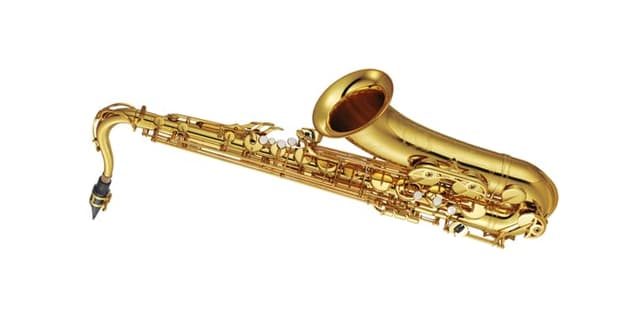
- The most well-known saxophone is the tenor. It is smaller, so it has a sad tone than a soprano. It is not easy to use and intuitive. Because it is a larger instrument, You must blow more air through it to make a sound. People use the sax in all musical styles, despite its lack of popularity amongst contemporary composers.
- It has the same vocal range as a male singer plus a deeper tone quality, making it suitable for any genre. Most saxophone players begin on alto and progress to tenor as their breathing and fingering skills improve.
- Although it is still quite versatile, it has a lower sound than the alto and is possibly more suited to rock and jazz. You can hear the tenor saxophonists on songs like The Girl from Ipanema and The Pink Panther.
- A beginner can handle Tenor Sax because players of varied sizes can play it. Furthermore, military and marching bands frequently use it. It produces a clear tone ideal for the harmony and rhythm sections.
Which Saxophone Is the Hardest to Play?
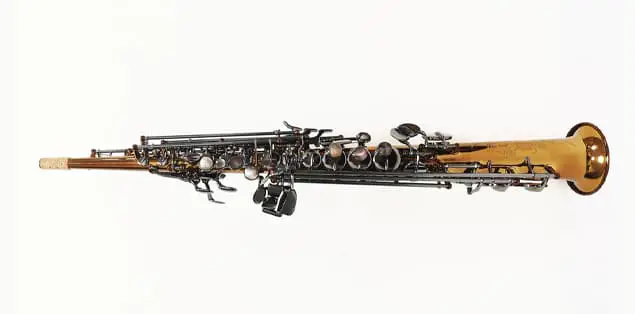
People sometimes question whether the saxophone is the most difficult to play as they learn more about the instrument and the various models.
Most people believe the soprano saxophone to be the most difficult to learn, with the baritone saxophone a distant second. The soprano sax is a challenging instrument because of its difficulty producing sound, larger range, tougher and more intricate music, and increased backpressure.
The second style of saxophone’s relaxed embouchure (mouth shape) isn’t present here. Instead, the most difficult aspect of the soprano is creating the sound, which is why it is at the top of the list.
Another reason for the soprano saxophone’s difficulty is that the music is much more difficult in general. The soprano saxophone is not a common saxophone, and it has a unique role in the groups where we use it.
The soprano frequently performs in a high, rapid, and erratic manner. As a result, it is substantially more challenging than the bari saxophone. Most classical and jazz composers think a soprano performer to be more skilled, so there aren’t many easy compositions for the soprano.
Which Saxophone Is the Easiest to Play?
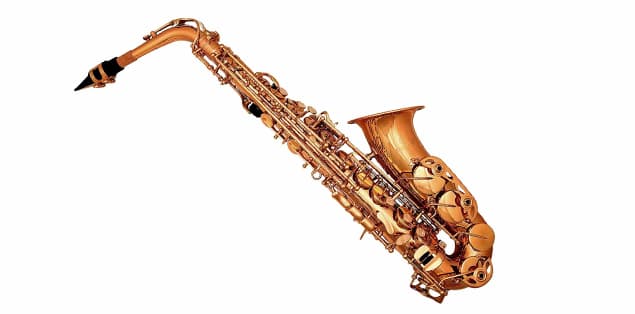
The first thing to remember is that both the larger and smaller saxophones will be difficult to play. As a result, the medium-sized saxophones will most likely be the easiest to play.
When determining how simple or difficult an instrument is, we consider the following factors: How simple it is to make a good sound (or any sound, for that matter); How simple it is to tune the instrument; and how simple the fingerings and technique are.
The alto saxophone’s intonation is usually rather consistent. On the other hand, the soprano saxophone is notorious for being out of tune, particularly in the high register. This is because the instrument is so little that even the tiniest shift in one’s embouchure or mouthpiece position can radically alter the instrument’s pitch and tone.
It takes more effort to keep an even sound when such minor tweaks make a large difference. Beginners may make unintended alterations that they are unaware of.
When manipulating one’s tone and intonation, alto saxophones have fewer issues. Without always overshooting or undershooting, purposeful adjustments can be made in the musician’s mouth while playing and perceive a difference. The alto and tenor saxophones are the “happy medium” in this regard.
What Type of Saxophone Does Kenny G Play?

Is there anyone who isn’t familiar with Kenny G’s relaxing music? He is most known for playing a single instrument. The instrument has the appearance of a clarinet, but it is not.
Kenny G plays the Selmer Mark VI soprano saxophone, tenor and alto saxophones, and sopranino saxophone. Kenny G Saxophones results from his success as a recording and concert performer who plays this musical instrument.
Kenny G said in an interview that the saxophone he utilized in all of his songs was his high school saxophone. He’s also been utilizing it for his daily three-hour practice sessions.
In his daily 3-hour practices, he plays his high school sax. Kenny G also stated that he is not the type of person who has to try something new to see whether it is better than what he has been utilizing. In the field of music, better is a subjective term to him.
What Type of Saxophone Did John Coltrane Play?
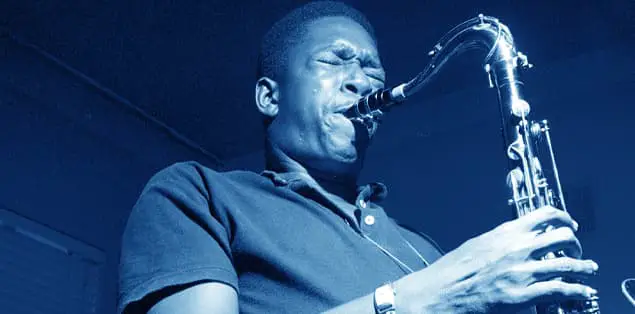
He shifted from clarinet to alto saxophone, then back to tenor saxophone. The city’s thriving jazz scene provided plenty of opportunities to learn and play.
Coltrane joined the Navy in 1945 and made his debut album the following year with the Melody Masters, a Navy band. After his military duty, Coltrane played with several local R&B and jazz ensembles, including a two-year stay with Jimmy Heath’s band in the late 1940s.
Trane was playing in New York by the end of the decade. However, he returned to Philadelphia in the fall of 1949, where they asked him to join trumpeter Dizzy Gillespie’s big band, along with Heath.
What Type of Saxophone Does Boney James Play?
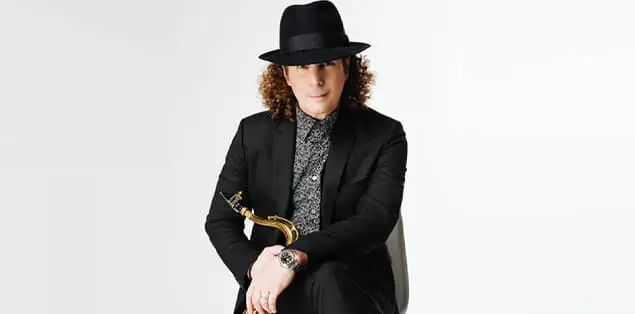
As a child, the teachers taught the saxophonist to play the clarinet. James Oppenheim, a tenor, alto, and soprano saxophonist born in Lowell, Massachusetts, is known as a genre-defying musician who wishes to “be my artist and not a pigeonhole.” James has received four Grammy Award nominations for his work in funk and rhythm and blues.
“It’s quite gratifying,” the composer remarked of one of the nominees in the R&B category. James’ distinctive professional moniker was born three decades ago while touring Scandinavia as a support musician with low financial resources.
Final Words
Having a hobby is always helpful in developing a personality and emotional and mental well-being. And what could be better than learning an exquisite instrument that is not common enough and helping in your breathing exercises?
This instrument can work very well for jazz lovers and those who love to listen to modern classical music. This instrument plays a major role in these kinds of music.
